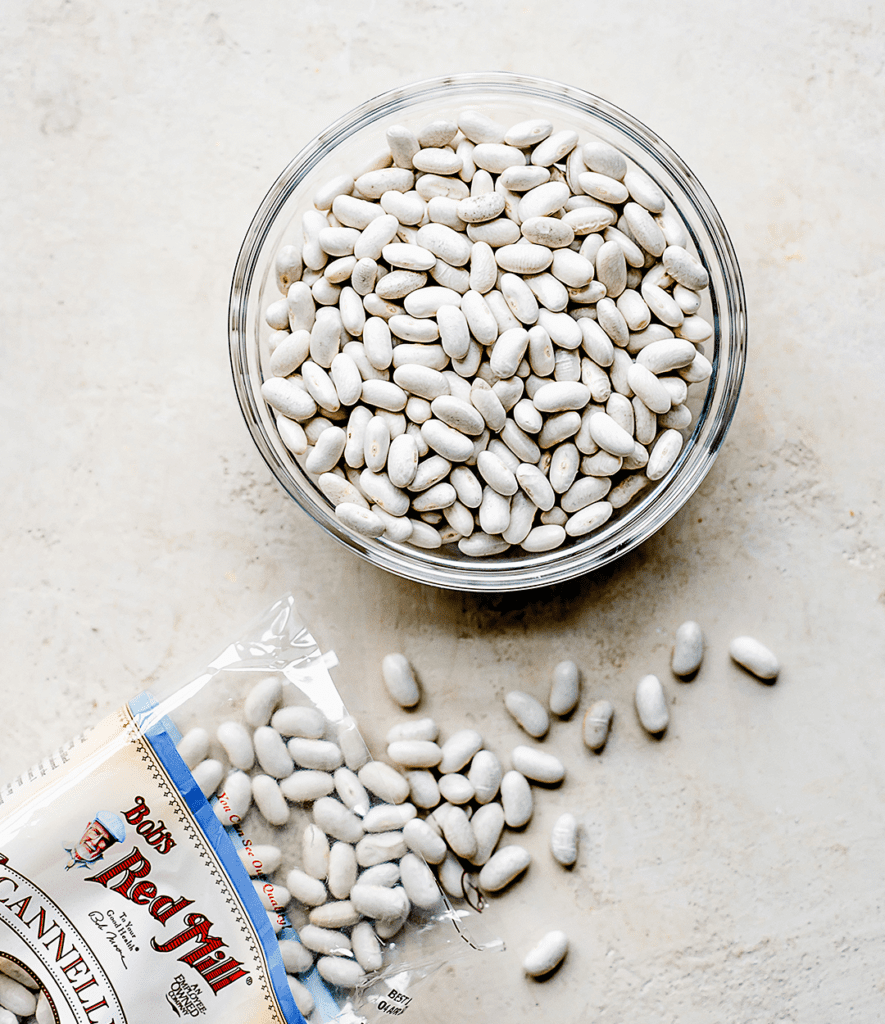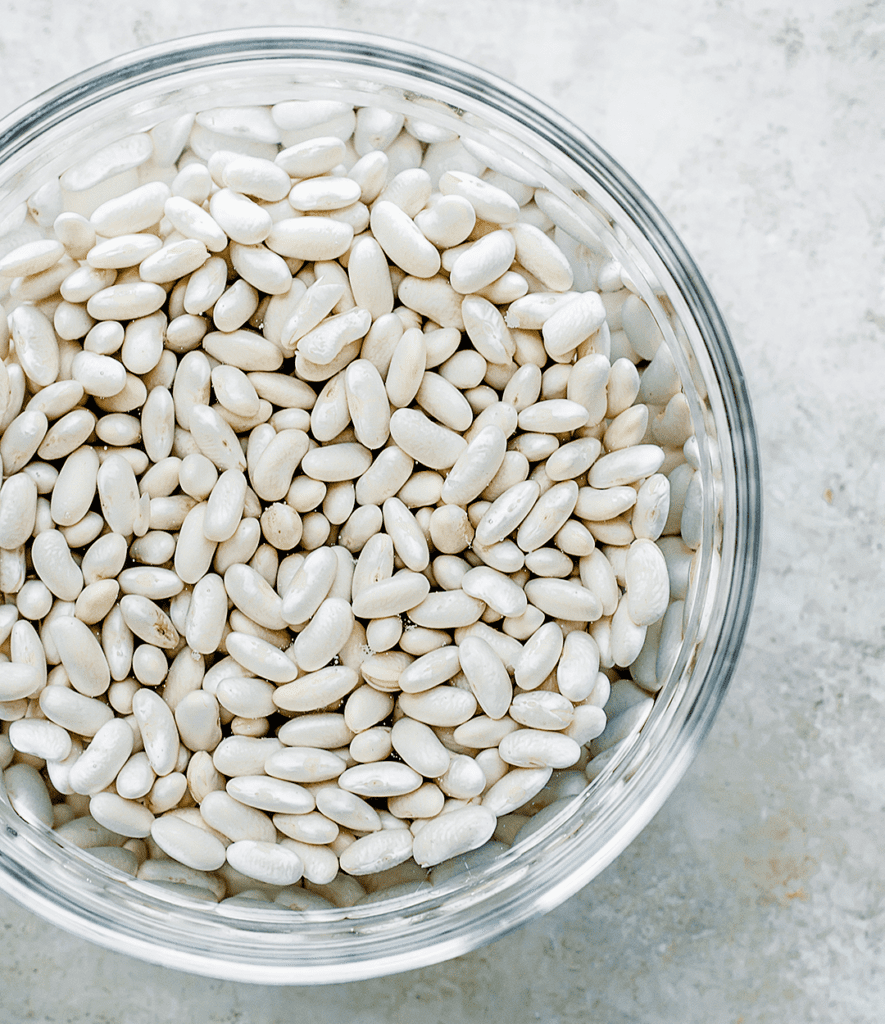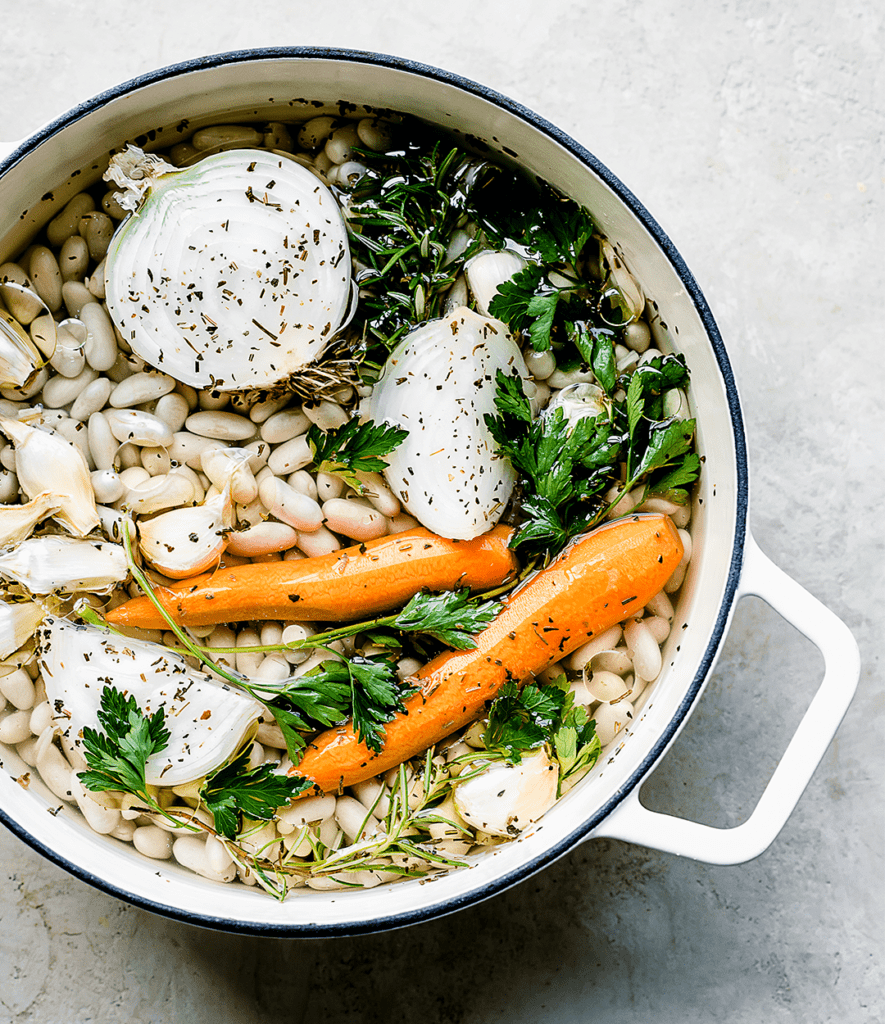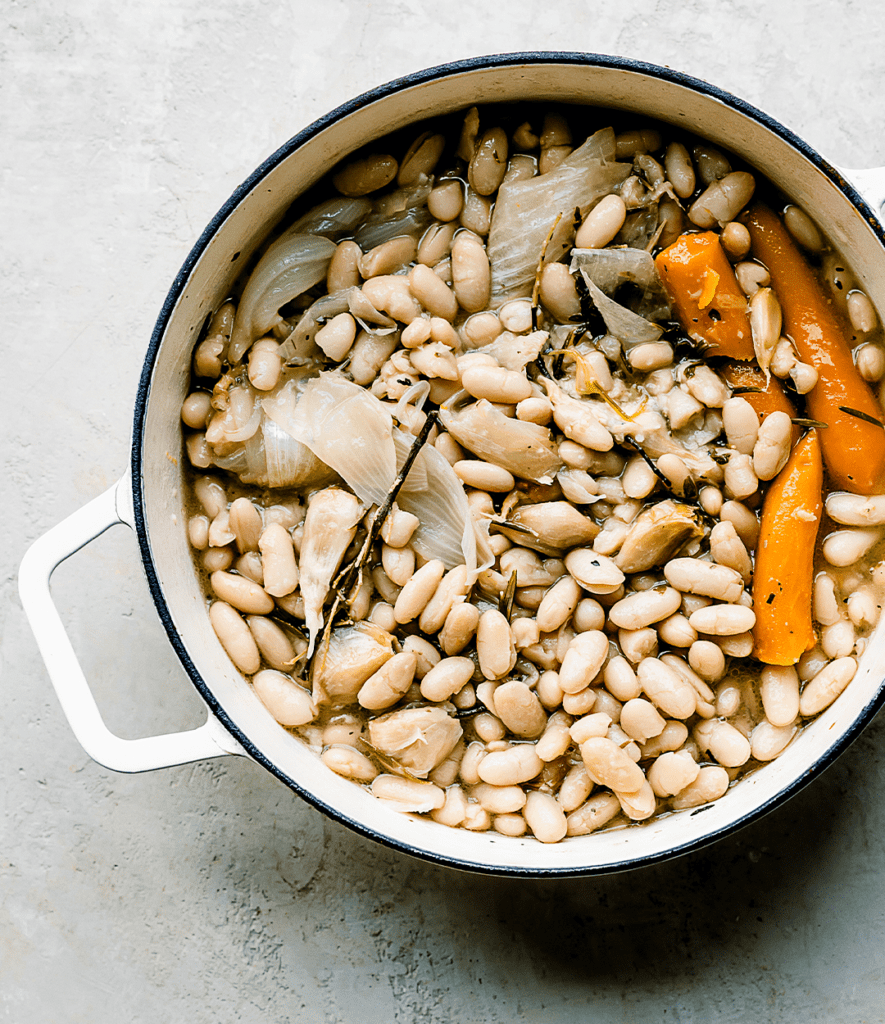In our book, dried beans are right up there with pasta and rice as pantry hall of famers, and yet, they tend to intimidate even a seasoned home cook. But why? If we had to guess, we’d say it’s because of the soaking process. Some people swear by the long soak. Others say it’s unnecessary. We’re fans of the overnight soak. There’s no downside. The beans get softer, and cook a whole lot faster, too.
Here’s how we like to prepare dried beans, including adding aromatics for extra flavor once they’re ready to cook.
Step 1: Open your bag of dried beans and place them in a large bowl

Then, add water to the bowl—just enough to completely cover the beans.
Step 2: Soak beans in water overnight

The beans will absorb the water and soften.
Step 3: Rinse, transfer to a pot with fresh water, and add flavor

At this stage, your beans will be tender but need to be cooked before they’re ready to eat. And we like to add even more flavor first.
Rinse the beans and place them in a heavy-bottomed pot or Dutch oven. Cover the beans with fresh water—just enough to cover the top of the beans by a few inches, about 6 cups. Then, add your favorite aromatic herbs, spices, and vegetables—whatever you have on hand that you would normally add to homemade vegetable stock. In this version, we added:
- 2 white onions, quartered
- 6 cloves of garlic, peeled
- 2 carrots, tops removed and peeled
- Parsley
- Rosemary
- Generous pinch of salt
- Freshly-cracked black pepper
Stir to combine, then put the pot on the stove over medium-high heat and bring to a boil. Once comfortable with this technique, you can incorporate even more herbs like fresh thyme, spices red pepper flakes, fresh chiles, and vegetables like shallots, potatoes, turnips, and even tomatoes. (Note: You can tie the herbs together to make cleanup easier later.)
Step 4: Bring to a boil, then lower to a simmer for 3 hours

Though soaking and cooking beans in salted water is enough, cooking them with other aromatics adds even more flavor. Bring the water to a boil and then quickly lower the heat to a simmer for 2-3 hours. Cook until beans are fully tender.
Step 5: Drain the liquid and aromatics
You can drain and discard the liquid—or better yet, save it for soup, braises, or pasta sauces. Compost the extra vegetables and herbs. Now, you’re left with flavorful, tender beans ready for tacos, pastas, soups, and stews, or even to top on toast.
Have you ever prepared dried beans before? Let us know in the comments what you do to give them extra flavor!

Comments (5)
Why compost the vegetables the beans were cooked in ? They sound good to eat.
Elaine
Hi Elaine, great question! You of course can eat this as-is—like a veggie and bean soup. It just may not be as flavorful as a traditional soup recipe, so just play around with your favorite flavor combinations and ingredients. Just be sure to remove any stems and peels. (The reason we suggest composting the veggies afterward is because, like when making a homemade veggie broth, we suggest using veggie scraps, the entire herb, and entire onion—skin and all. This adds more flavor to the beans but you don’t want to eat the onion skins.)
Thanks!
I noticed one thing you didn’t have about preparing dried beans. I always sort through my dried beans to make sure there aren’t rocks ( I kid you not) or other debris in them. Then I wash them
Great tip, Donna!
Dry beans are better cooked in veggie broth , or chicken broth, here in the south we like leaving some of the bean liquid in when serving, better for adding corn bread …lol